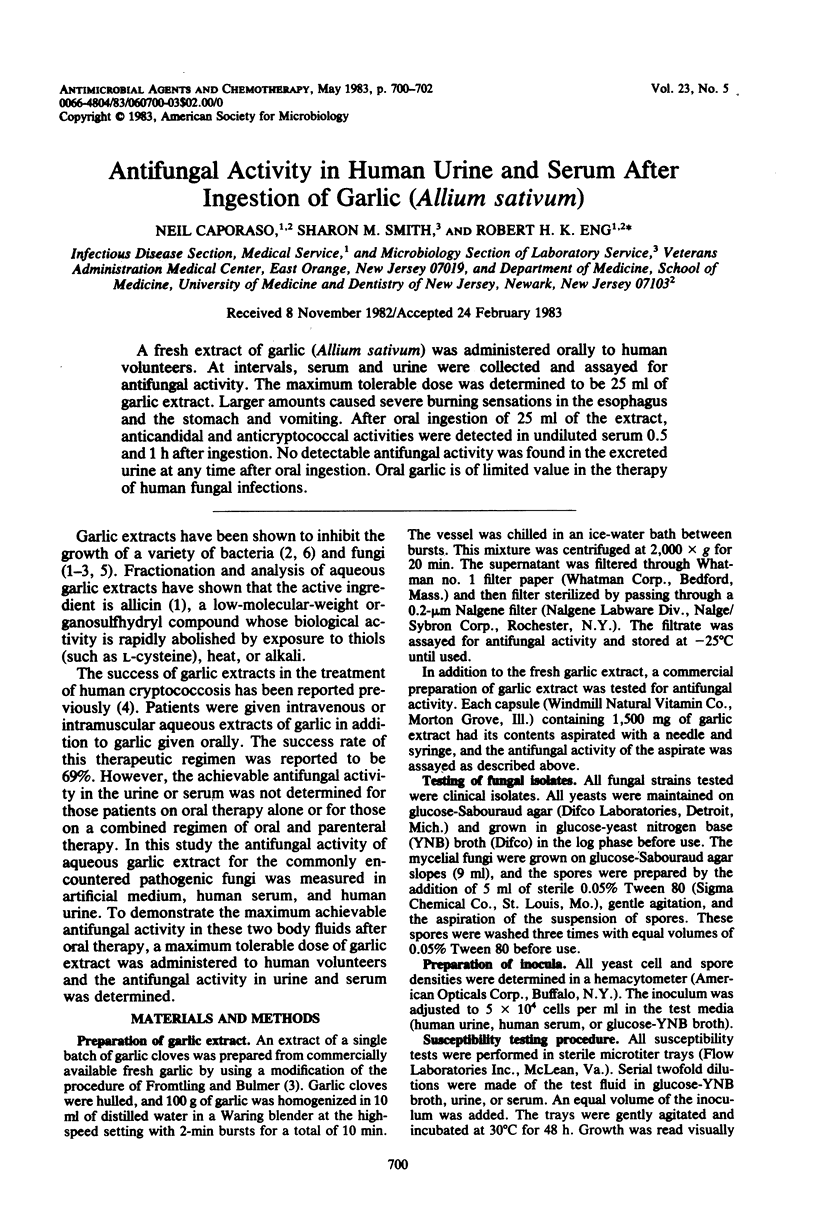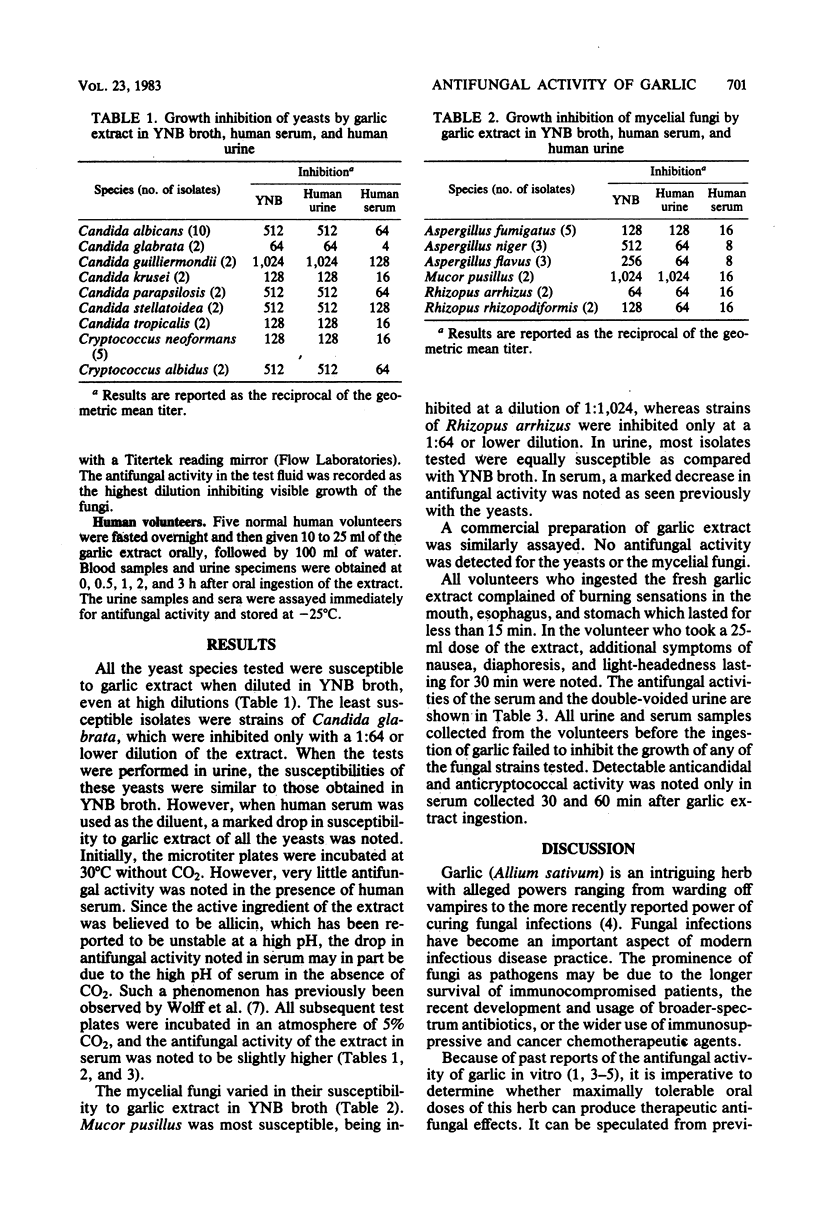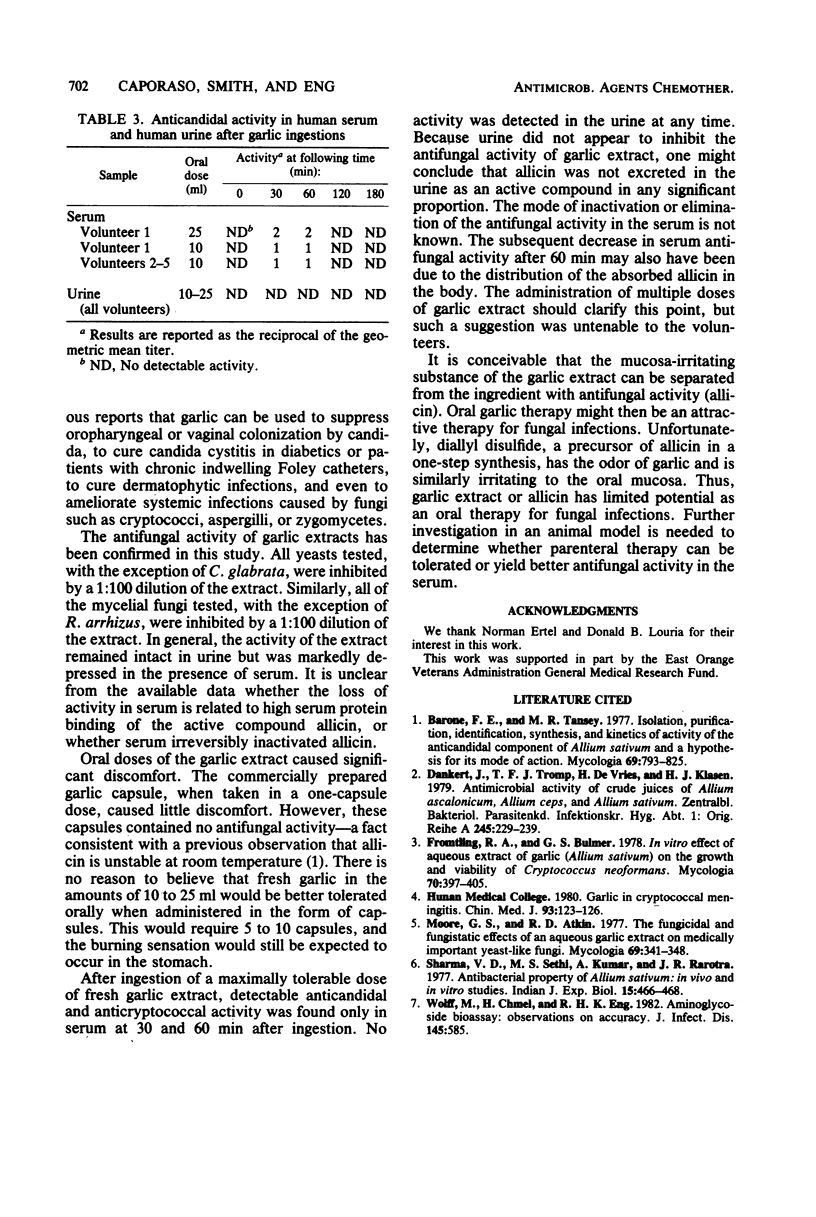Abstract
A fresh extract of garlic (Allium sativum) was administered orally to human volunteers. At intervals, serum and urine were collected and assayed for antifungal activity. The maximum tolerable dose was determined to be 25 ml of garlic extract. Larger amounts caused severe burning sensations in the esophagus and the stomach and vomiting. After oral ingestion of 25 ml of the extract, anticandidal and anticryptococcal activities were detected in undiluted serum 0.5 and 1 h after ingestion. No detectable antifungal activity was found in the excreted urine at any time after oral ingestion. Oral garlic is of limited value in the therapy of human fungal infections.
Full text
PDF


Selected References
These references are in PubMed. This may not be the complete list of references from this article.
- Barone F. E., Tansey M. R. Isolation, purification, identification, synthesis, and kinetics of activity of the anticandidal component of Allium sativum, and a hypothesis for its mode of action. Mycologia. 1977 Jul-Aug;69(4):793–825. [PubMed] [Google Scholar]
- Dankert J., Tromp T. F., de Vries H., Klasen H. J. Antimicrobial activity of crude juices of Allium ascalonicum, Allium cepa and Allium sativum. Zentralbl Bakteriol Orig A. 1979 Oct;245(1-2):229–239. [PubMed] [Google Scholar]
- Fromtling R. A., Bulmer G. S. In vitro effect of aqueous extract of garlic (Allium sativum) on the growth and viability of Cryptococcus neoformans. Mycologia. 1978 Mar-Apr;70(2):397–405. [PubMed] [Google Scholar]
- Moore G. S., Atkins R. D. The fungicidal and fungistatic effects of an aqueous garlic extract on medically important yeast-like fungi. Mycologia. 1977 Mar-Apr;69(2):341–348. [PubMed] [Google Scholar]
- Sharma V. D., Sethi M. S., Kumar A., Rarotra J. R. Antibacterial property of Allium sativum Linn.: in vivo & in vitro studies. Indian J Exp Biol. 1977 Jun;15(6):466–468. [PubMed] [Google Scholar]
- Wolff M., Chmel H., Eng R. H. Change in serum pH in the bioassay of aminoglycoside antibiotics. J Infect Dis. 1982 Apr;145(4):585–585. doi: 10.1093/infdis/145.4.585. [DOI] [PubMed] [Google Scholar]


